World Piano Day is a celebration of music and creativity, which is perfect for introducing kids and adults to the possibilities of combining technology and art. What better way to celebrate than by creating a digital piano with MaKey MaKey? The MaKey MaKey is a versatile invention kit that transforms everyday objects into touchpads! It is also a great DIY tool for adaptive technology. I suggest pairing this hands-on activity with a reading of The Bear and the Piano by David Litchfield, a heartwarming story of music, exploration, and friendship.
Why Use MaKey MaKey?
MaKey MaKey is an innovative tool that lets users turn almost anything into a computer input! Bananas, foil, even pencil drawings (anything that is conductive) can become keys for a digital piano. It’s perfect for World Piano Day because it sparks curiosity and encourages creativity. Plus, it’s a fantastic opportunity to integrate STEM concepts with music and storytelling.
Setting Up Your Digital Piano
Here’s how to make a digital piano with MaKey MaKey:
- Materials Needed:
- MaKey MaKey kit
- Laptop or desktop with internet access
- Conductive materials (e.g., aluminum foil, bananas, or Play-Doh)
- Alligator clips (included in the kit)
- The Bear and the Piano for reading aloud
- Access to a piano-playing website like Scratch or MaKey MaKey’s own apps
- Create the Piano Keys:
Lay out your conductive materials in a row to form “keys.” For example, flatten strips of aluminum foil or line up bananas on a table. Ensure they’re spaced far enough apart to play easily.
- Connect the MaKey MaKey:
Attach an alligator clip to each conductive material and connect the other ends to the MaKey MaKey’s input slots (e.g., arrows and space bar). Use the grounding wire to connect players to the circuit—they’ll complete it by touching the “keys.”
- Program Your Piano:
Open a digital piano program or a pre-made Scratch project that maps keyboard inputs to notes. Test each “key” to ensure it plays the right sound.
- Test and Tweak:
Experiment with different materials or arrangements. Encourage participants to add decorations or labels to the keys.
Tie It to The Bear and the Piano
Before or after the activity, read The Bear and the Piano aloud. Discuss themes like courage, creativity, chasing dreams, and community. How did the bear’s piano playing inspire others? Relate the story to the students’ creations—just like the bear, they’re exploring new ways to make music!
If you’re working with younger kids, I recommend incorporating the MaKey MaKey piano playing as you’re reading the book aloud. When the bear shyly touches the keys, do the same! If you’re really comfortable and somewhat savvy, cue up an identifiable piano song and have that play whenever the bear becomes really good at playing the piano. My personal favorite to use is Vanessa Carlton’s “One Thousand Miles.” Guaranteed to get some chuckles from adults who may be sitting in.
Extend the Activity
Want to dive deeper? Try these extensions:
- Compose a Song–Have participants create and record their own tunes.
- Art Meets Tech–Use conductive ink or regular #2 pencils to draw piano keys on paper.
- Experiment–Challenge participants to use unusual objects as piano keys and figure out which ones are conductive.
- Code–Challenge participants to create their own piano or other instrument on Scratch.
Celebrate World Piano Day
Making a digital piano with MaKey MaKey is a fantastic way to blend together literature, technology, and music. It’s hands-on, collaborative, and leaves room for endless creativity! This activity will not only spark curiosity but also leave participants with a deeper appreciation for the power of music and innovation.
What better way to celebrate World Piano Day than by playing music, exploring technology, and sharing the story of The Bear and the Piano? You can also just expand this activity and turn it into an interactive exhibit with something like an old computer with SoundPlant installed on it. Map particular sounds or instruments to specific keys and hook up the MaKey MaKey. I had this installed in the stairwell at my old library:

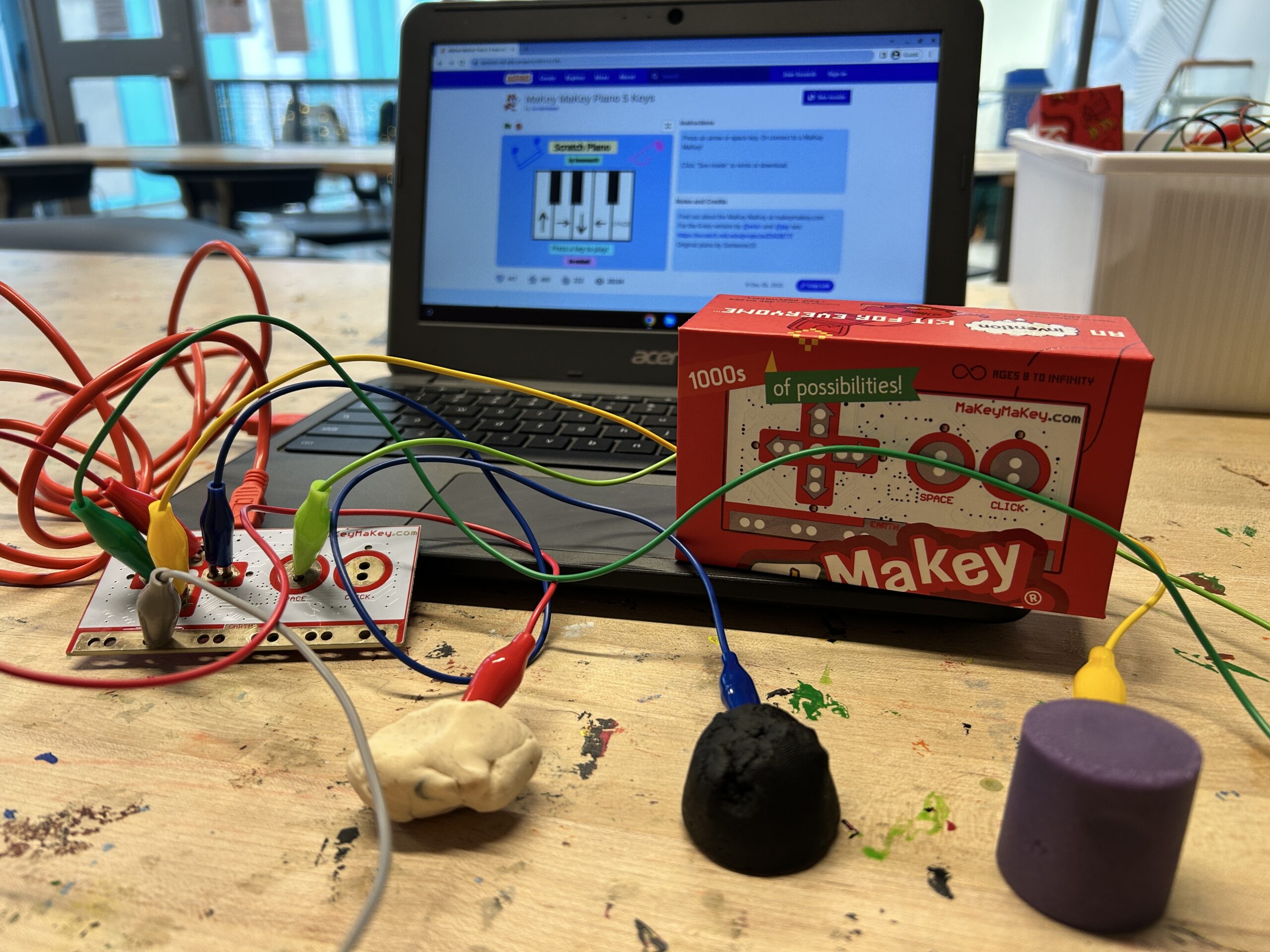
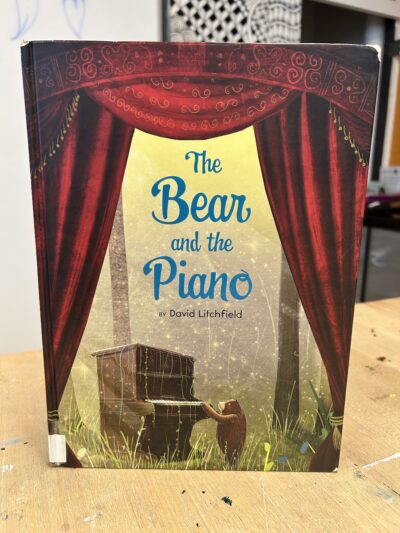
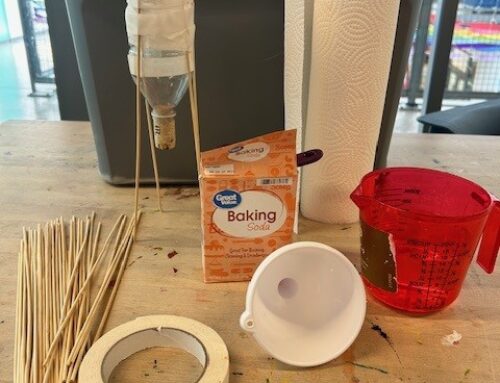

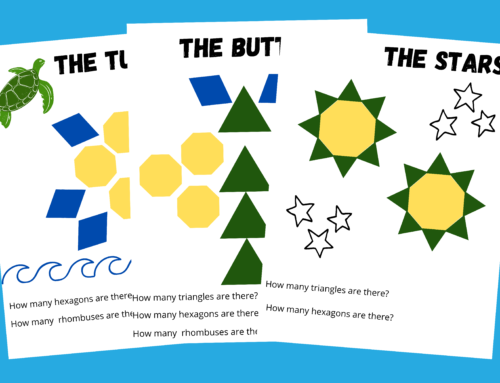
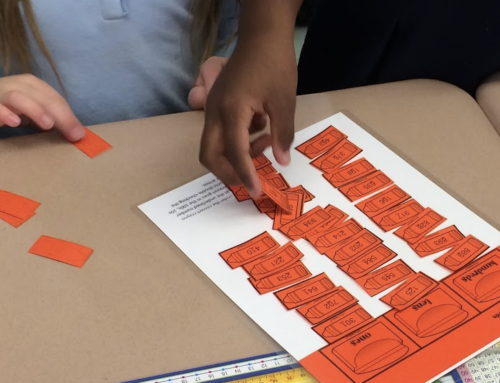


Leave A Comment